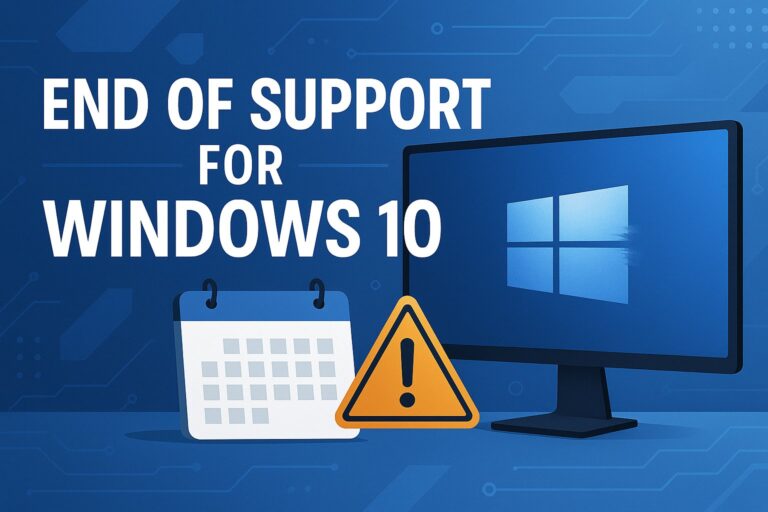Technology Best Practices for Nonprofits
IT isn’t just about having the newest, most expensive tech – and on a nonprofit budget, that’s not even an option. What’s more important is how you use the technology tech you have – do you know how to make the most of it?
3 Best Practices To Improve Nonprofit IT Strategy
When you don’t have the resources to completely overhaul an aspect of your organization that needs improvement, it’s smart to look at how you use the other resources available to you. Are you making the most of your available IT?
Nonprofits struggle with many challenges that traditional enterprise-based corporations do not, given that they often operate on the bare minimum of resources, staff, and volunteers.
When you don’t have any extra dollars to spend on additional features, surplus services, or other things enjoyed by for-profits, then you have to make every single penny count.
Fortunately, modern models of IT services offered by St. Louis IT companies, and the technologies delivered therein, offer an economy of scale.
Put simply? Instead of having to pay outright to purchase and own something, you pay a fraction of the cost on a regular basis for full access to it when you need it.
Based around that idea, consider putting these best practices to use at your nonprofit…
3 Best Practices To Help You Get More Out Of Your Nonprofit IT
1. Make Sure Your Technology Is Helping You Meet Your Goals.
Technology should not just be an afterthought.
Just like your staff, technology is a resource in which you invest. You wouldn’t hire someone to work at your nonprofit without finding out what they can do, and figuring out where best they would fit in the organization, right?
It should work the same way with your technology.
It’s critical that you align technology to your organizational goals so that you’re not wasting money or technology you’ve already bought.
But, how do you know what the right technology is?
You could do the homework yourself. That’s assuming you have the time do so, and a sufficient understanding of technology to do so.
On the other hand, the easiest way is to ask a St. Louis IT company that has experience working with nonprofits. They can provide an IT assessment that will examine the technology you use and what’s lacking in relation to your culture, process, and financial requirements. This will generate greater value for your organization while decreasing risk.
2. Determine If The Cloud Will Support What You Do.
Like many other nonprofits, you may still be relying on extremely outdated technology. This could be as a way to save money, or it could be simply out of a desire to stick with what you know.
However, the reality is that upgrading doesn’t necessarily have to be expensive or difficult.
With today’s newer, cloud-based and more flexible IT infrastructure solutions, your nonprofit can have the technology you need at a fraction of the cost of purchasing it.
A key benefit of the cloud is that you don’t need to worry about technology solutions going out of date. With cloud-based Software-as-a-Service (SaaS) solutions, you can add or delete the number of seats you pay for, and because you pay on a monthly subscription basis, it makes technology easy to plan and budget for.
Again, finding the right cloud solution for your nonprofit is just a matter of doing the work. If you have the time and inclination, you should carefully evaluate the cost, capabilities, and security of cloud solutions that range from DropBox (simple file storage) to Microsoft Office 365 (full-fledged cloud suite).
If you’re unsure, don’t forget that there St. Louis IT companies that offer customized, industry-specific cloud solutions that can help you remove data silos, optimize your resources, and improve operations and efficiencies.
By exploring these new cloud innovations, it’s possible to leverage business intelligence that will help you overcome some of the challenges we mentioned above.
3. Structure Your Cybersecurity Around A Carefully Designed Policy.
Cybersecurity cannot be overlooked – improperly secured technology can put your donors, your mission and yourself at risk.
If you don’t mitigate risk and protect your nonprofit organization’s confidential data, you could face a costly data breach. Just one breach could result in hefty fines, penalties, expensive litigation and a ruined reputation that scares donors away.
A properly defined security policy has three primary objectives:
- Confidentiality of data and information assets and to confine these to only those authorized to access them.
- Integrity of data to keep it intact, complete and accurate, and to keep IT systems running reliably.
- Availability so data or IT systems are accessible to authorized users when required.
In developing a policy to help you meet these objectives on an ongoing basis, your policy should be detailed and include information on the following:
- Identify a general approach to data security.
- Denote the steps taken to detect and prevent compromising of data and IT infrastructures including misuse of information technology, networks, computer systems, and applications.
- How to protect the reputation of your nonprofit with respect to its legal and ethical responsibilities.
- To observe the rights of your members and donors and to provide effective mechanisms to respond to complaints, questions, and concerns about non-compliance with the policy.
As with the other best practices (and likely even more so), you would be wise to enlist some support from a St. Louis IT company. This is one part of your nonprofit you don’t want to cut corners on.
Like this article? Check out the following blogs on nonprofit IT to learn even more:
Is Your Nonprofit Using IT Best Practices For Success?
5 Crucial Elements to Training Your Employees in Optimal Cyber Security


